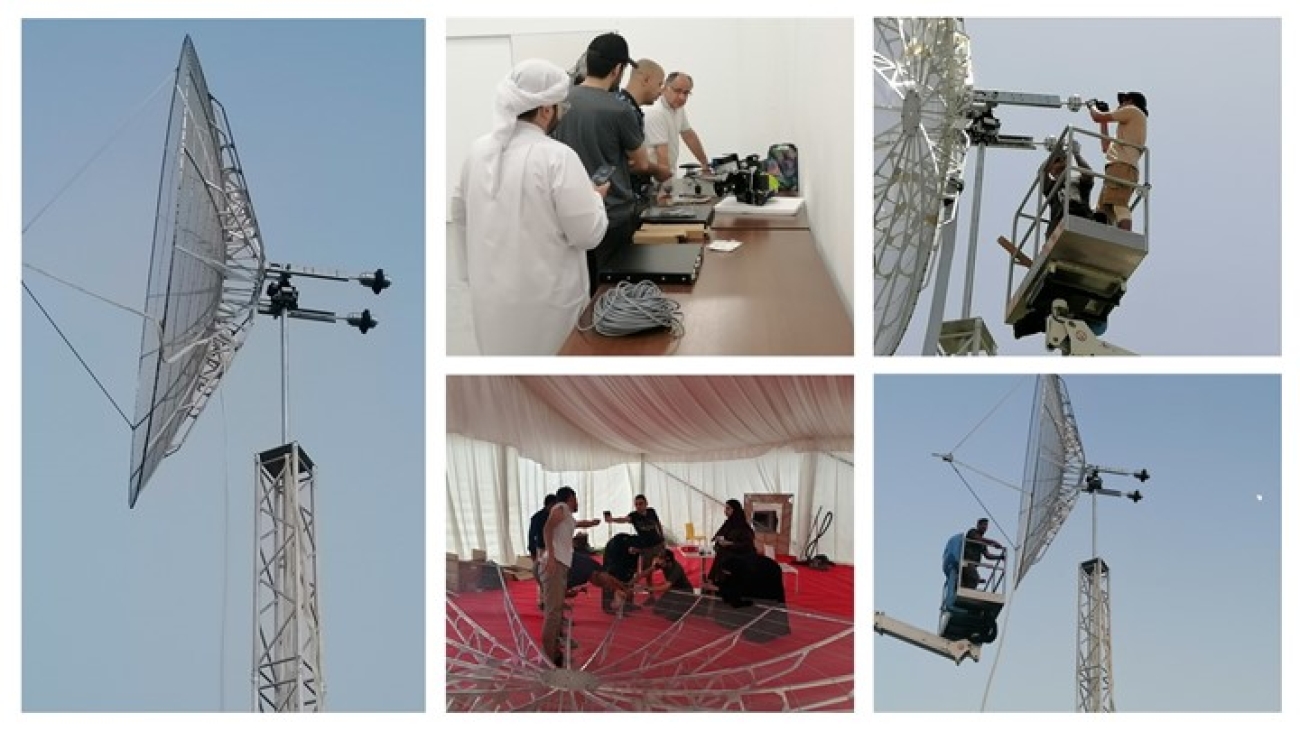They finished the whole assembly late on Jul. 27. The SAASST engineers were working with a team from the Istanbul Technical University.
Building a 4.5-meter S-Band ground station represents a significant endeavor in the realm of satellite communication. Such a ground station is designed to operate in the S-Band frequency range, typically spanning from 2 to 4 GHz, and it plays a crucial role in establishing a reliable and efficient communication link with satellites in space. SAASST S-Band station is tuned to work at 2.4 GHz.
The construction of a 4.5-meter S-Band ground station requires meticulous planning, engineering expertise, and state-of-the-art technology. The antenna itself, a key component, is a parabolic reflector designed to focus radio waves onto a feed horn, allowing for bidirectional communication with satellites in orbit. The antenna size, 4.5 meters in diameter, enables it to capture and transmit weak signals, maximizing the data transfer rate and minimizing the potential for signal loss, which is particularly important for long-range communication.
The S-band ground station was built near the SAASST VHF/UHF ground station. Its location selection was critical to minimize interference and signal blockage. A strategic site with a clear line of sight to the desired satellite orbit is chosen, considering factors like elevation, distance from potential sources of electromagnetic interference, and accessibility for maintenance and upgrades.
The SAASST S-Band ground station serves multiple vital functions in satellite communication. First and foremost, it will be used to download data faster from the present Sharjah-Sat-1, a 3U+ CubeSat, launched on Jan. 03, 2023, dedicated to observing the Sun and bright X-ray stars. It can also serve as a gateway to enable communication with a variety of satellites, including geostationary, low Earth orbit (LEO), medium Earth orbit (MEO), and high Earth orbit (HEO) satellites. This communication link allows for data exchange between ground operations and the satellite, including telemetry, tracking, and control (TT&C) data, payload data, and command uplinks.
The SAASST S-band ground station will be capable of receiving large volumes of valuable scientific, environmental, and observational data from Earth observation satellites and other remote sensing missions. This data is then processed, analyzed, and disseminated to end-users such as scientists, researchers, weather forecasters, and other stakeholders, facilitating essential applications like climate monitoring, disaster response, agriculture, and navigation.
In conclusion, building a 4.5-meter S-Band ground station is a technologically sophisticated endeavor that opens up numerous possibilities in satellite communication. From enabling seamless two-way communication with satellites to supporting vital command and control operations and facilitating the downlink of crucial satellite data, this SAASST ground station will play a pivotal role in advancing space exploration, scientific research, and various societal applications. As satellite technology continues to evolve, the 4.5-meter S-Band ground station will remain a crucial infrastructure, fostering our understanding of the universe and improving life on Earth.



